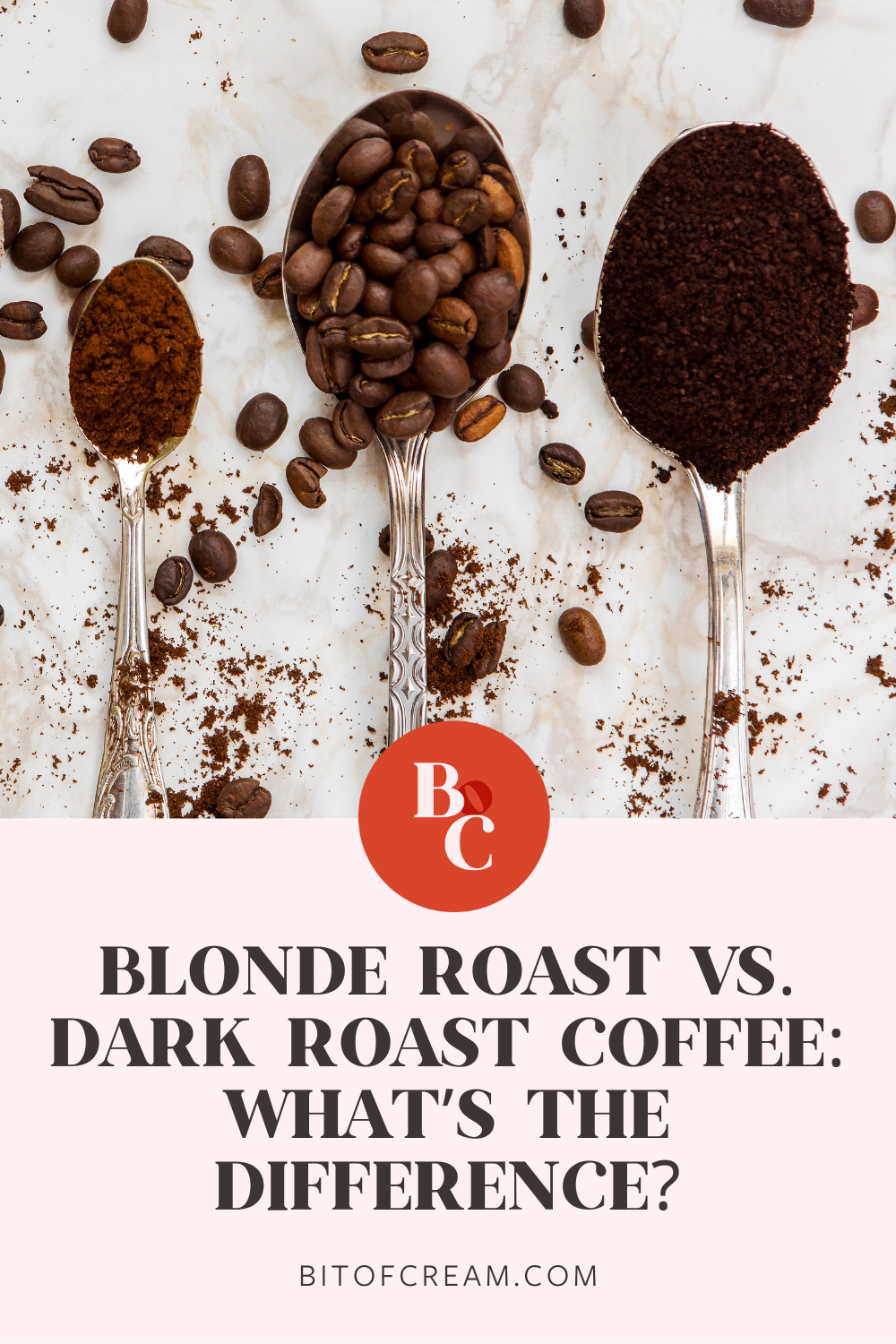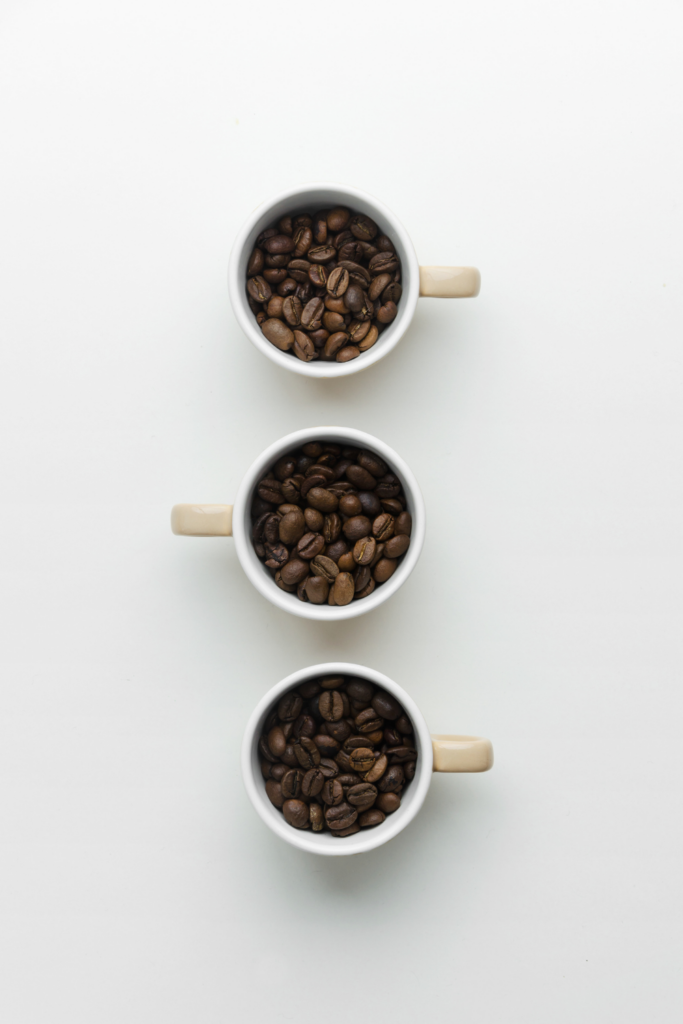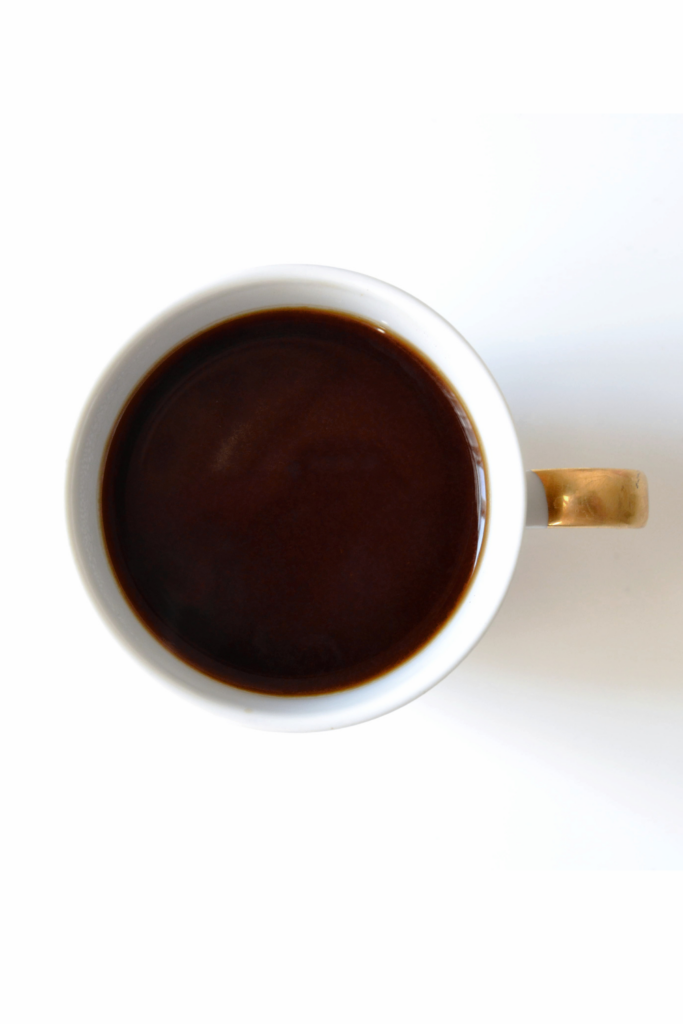There are a dozen ways to describe how coffee is roasted, and some of the labels (like Blonde Roast) are open to interpretation.
In this post, I’ll help you unravel the differences between blonde roast and dark roast coffee. We’ll talk about the characteristics of a “blonde” roast at Starbucks vs. everywhere else.
Plus, I’ll share a few guidelines to help you find and order your favorite flavor, regardless of where you get your coffee!

What is Blonde Roast?
Blonde roast coffee is characterized by a shorter roasting duration at a lower temperature than other roasts. It’s known for its light brown color, higher acidity, and mellow flavors. You can also use blonde roast beans to create blonde espresso.
Blonde roast doesn’t always mean the roast is “light.” Some roasters use the term “blonde” to explain that a specific roast is lighter than their other products.
Starbucks does this with its Blonde Roast, Sunrise Blend, and Veranda Blend. The blonde roast coffee beans is designed to provide a more mild and approachable flavor profile. But it’s still, at least, a medium roast. This means the coffee or espresso will have a light, pleasant balance between a bright and smooth flavor.
Starbucks describes its Blonde Roast as having a subtle sweetness and a light-bodied texture. It’s less intense than their medium or dark roast offerings. The finish is clean, lively, and vibrant, with hints of citrus and floral.
What is a Dark Roast?
Dark roast coffee is roasted longer than a blonde or medium roast and at a higher temperature. The results are a dark brown color and a rich and strong flavor profile. The extended roasting process brings out deeper and stronger flavor of the beans. It also lessens the acidity and creates a full-bodied texture.
Starbucks offers a range of dark roast beans such as Sumatra, Café Verona, Morning Joe, Italian Roast, and French Roast. Overall, their dark roasts have a bold coffee flavor with intense smoky flavors.
The coffees exhibit notes of chocolate, caramel, and sometimes hints of spice. They’re known for their strong, full-bodied texture and lingering, bittersweet aftertaste.
Differences between Blonde and Dark Roast
Roast Level
The most obvious difference between blonde roast and dark roast coffee is the roast level.
Blonde roast undergoes a shorter roasting duration at a lower temperature. This way, the roast level preserves the bean’s natural acidity and bright flavors. With a lighter roast, you can taste the difference between origins or blends. This is because the subtle flavors aren’t overpowered in the roasting process.

Dark roast coffee beans are roasted longer and at higher temperatures to create an intense, rich flavor. It can be difficult to distinguish one dark roast from another since the primary flavor is the strong, roasted flavor of the bean.
Flavor
Blonde roast tends to have a brighter and more delicate flavor profile than dark roast coffee. It exhibits a crisp acidity with vibrant notes reminiscent of citrus, floral, or sometimes a subtle fruitiness.
The lighter roast allows the inherent flavors of the coffee bean to shine, resulting in a nuanced and refreshing taste.
On the other hand, dark roast coffee presents a bolder and more pronounced flavor profile. The extended roasting process brings out a deeper, smoky, and caramelized taste.
Dark roast coffee boasts rich notes of chocolate, roasted nuts, and hints of warm spices. The intense roast level diminishes the coffee’s natural acidity and creates a full-bodied, robust cup of coffee.
Body
Blonde roast coffee generally has a lighter body than dark roast because of the shorter roasting duration. The light roasting process allows for a more delicate and silky mouthfeel that doesn’t linger.
Blonde roast coffee has a light texture that translates to a clean or crisp sensation on the palate. The body allows subtle flavors to shine through without overwhelming your tastebuds.

In contrast, dark roast coffee has a full body. The extended roasting process extracts oils from the beans, which create a heavier mouthfeel. As a result, dark roast coffee coats the tongue with caramelized sugars and deep, intense flavors.
Acidity
The shorter roasting process for blonde roast coffee leaves most of the natural acids in the coffee bean intact. The result is a crisp, almost zesty quality to the coffee.
The prolonged roasting process of dark roast coffee breaks down some of the acids to create a smooth, mellow taste. Dark roast coffee may still have some acidity, but it’ll be much less pronounced than in blonde roast.
Coffee lovers with sensitive stomachs usually prefer medium or dark roast coffees. Less acidity means they’re less likely to result in stomach upset.
Caffeine
The caffeine content in coffee is primarily influenced by the variety and brewing method—not the roast level. So, the difference in caffeine between blonde and dark roast coffees is minimal.
While it’s true that darker roasts have a bolder flavor and “stronger” taste, the roasting process doesn’t impact the caffeine levels. The misconception that dark roast coffee has less caffeine and that blonde roast has a higher caffeine content, but that likely stems from the fact that the longer roast leads to reduced bean mass. But this doesn’t affect the level of caffeine.
Uses
Blonde roast coffee is well-suited for brewing methods that highlight its delicate flavors because it ‘s a light-bodied coffee. Pour-over, drip, and French press brewing are excellent options to accentuate the bright, nuanced characteristics of the roast. The lighter body and high acidity of lighter roasts make it a refreshing choice for iced coffee or cold brew.

Keep in mind that the subtle flavors of blonde roast coffee can be easily overwhelmed by milk or sweeteners, so the best way to enjoy it is typically black, like tea, and I think most coffee enthusiasts agree with that!
With its bold and robust flavor, dark roast coffee is often favored for espresso-based drinks. It’s used to make lattes, cappuccinos, and macchiatos. The intensified flavors cut through the richness of milk to create a balanced, smooth drink. It’s best brewed with an espresso machine, Moka Pot, or Aeropress so that you can extract the deep flavors and oils of the beans.
The Bottom Line
Blonde and dark roast coffees differ in flavor, body, acidity, and preferred brewing techniques.
Blonde roast, with its lighter roast level, showcases delicate and vibrant flavors, higher acidity, and a lighter body. It is often enjoyed for its subtle taste and is best appreciated through brewing methods like pour-over and French press.
Dark roast presents bolder and more pronounced flavors, a fuller body, and reduced acidity. It is favored for its robustness and it’s often used for espresso-based drinks. Typical brewing methods include espresso machines and Moka pots.
While the roast level does not significantly impact caffeine content, personal preferences for taste and strength may influence your choice between different types of blonde and dark roast.
And the best part is that Starbucks will allow you to customize any of their sweet and tasty craft coffees to include blonde or dark roast. So grab your reusable travel cup and keys, and treat yourself to a bright and lively coffee or a rich and bold cup!
FAQ
Blonde and dark roast coffees have similar caffeine content, but they differ starkly in flavor. Dark roast coffee generally has a stronger, bolder, more intense flavor than blonde roast. The beans are roasted longer than blonde ones, which results in a more robust and bitter taste profile.
The health benefits of coffee, such as its antioxidants and polyphenols, don’t vary between roast levels. So both blonde and dark roast coffees can similarly be part of a healthy diet. However, dark roast coffee tends to be less acidic than blonde roast. This is a result of the longer roasting process, so it’s a better choice for coffee drinkers with sensitive stomachs.
Blonde coffee or “light roast” are terms to describe coffee beans that have been roasted for a short duration of time. This results in a lighter profile flavor and brighter, more delicate flavors. The beans are a light brown or golden color and often highlight fruity or floral notes.

Love this article. Cleared up my confusion on Blonde vs Dark roasts. I had the caffeine content totally reversed.